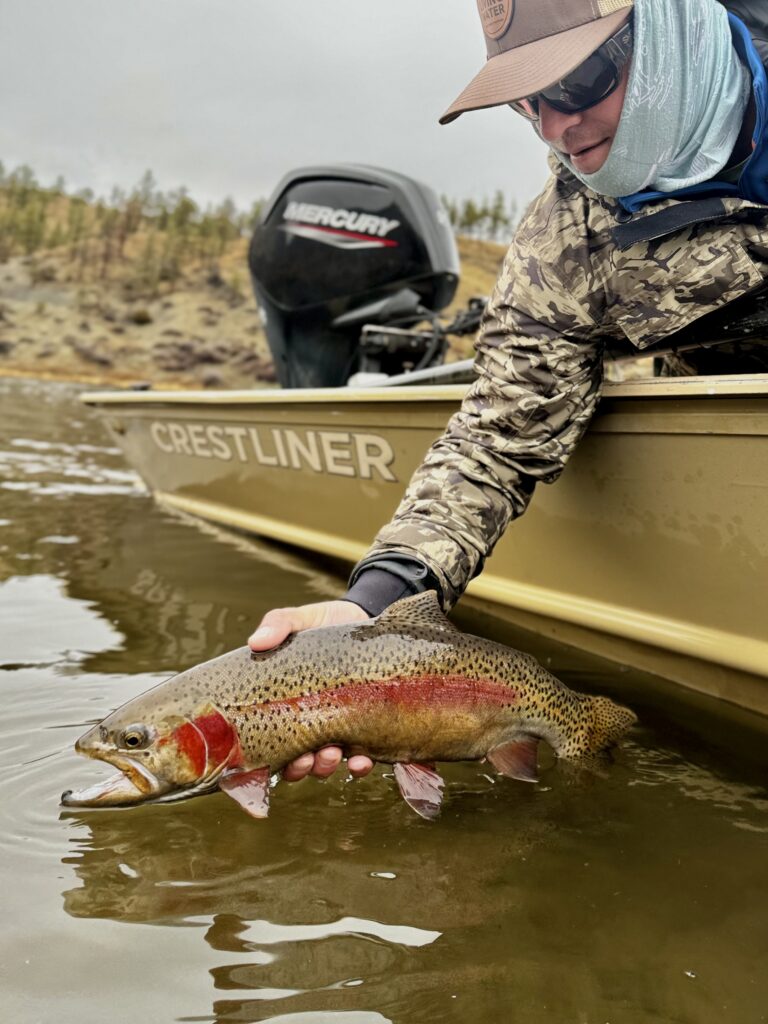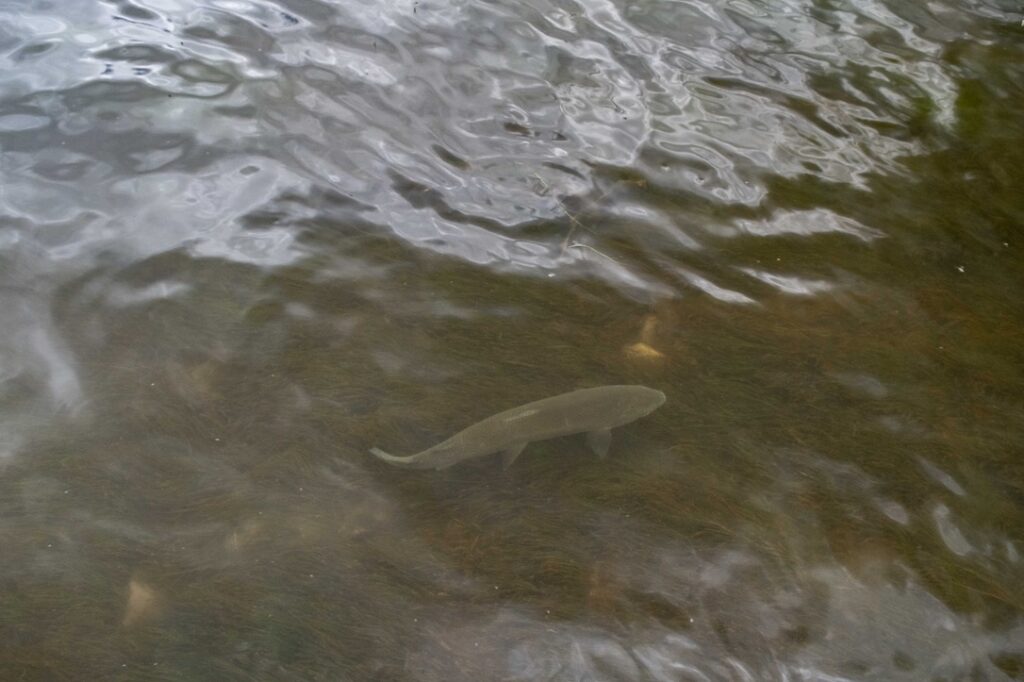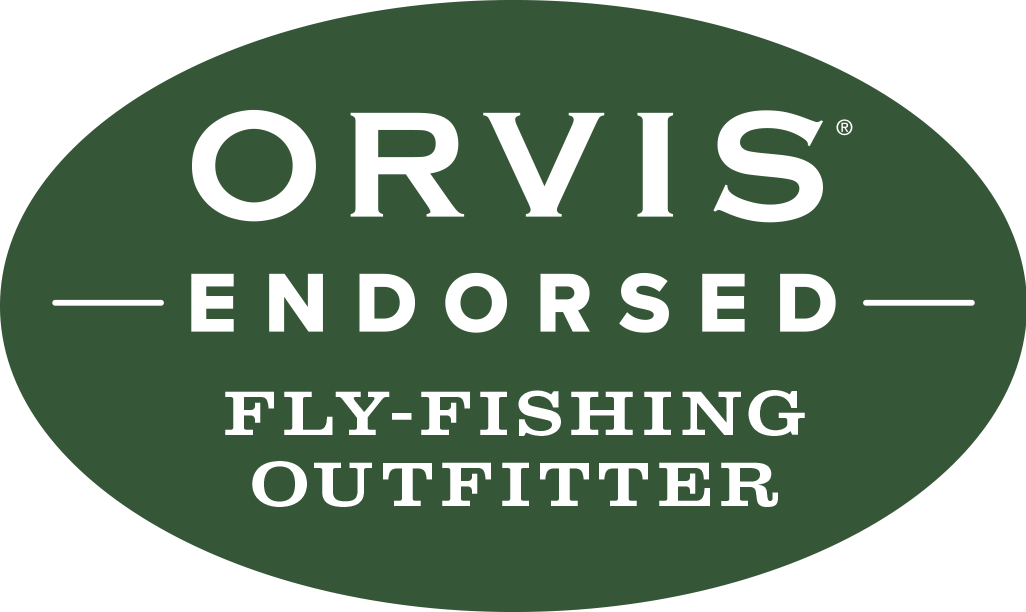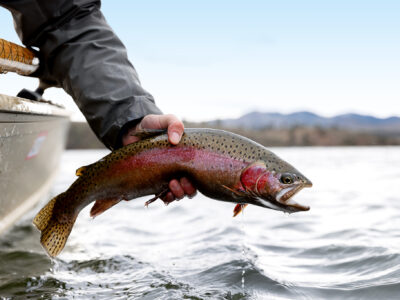Montana’s reputation as a fly fishing paradise is often tied to its world-class rivers. But for the discerning angler, the state’s stillwater fisheries offer equally rewarding opportunities. Lakes and reservoirs such as Holter or Hebgen lake provide diverse habitats where trout grow fat on the abundant aquatic life. Success in these waters often hinges on understanding two critical insect hatches: chironomids and Callibaetis mayflies. Let’s dive into the nuances of stillwater fly fishing Montana’s lakes and the prolific hatches.
The Allure of Stillwater Fly Fishing
Stillwater fly fishing Montana’s lakes is an experience that demands patience, observation, and strategy. Unlike rivers where trout are confined to runs, riffles, and pools, lakes present a vast canvas. Fish are not bound by the current and can move freely in search of food. This freedom, combined with the abundant insect life in Montana’s lakes and reservoirs, creates ideal conditions for trout to reach trophy size.
One standout fishery is Holter Lake, a reservoir on the Missouri River system. Holter is renowned for its rainbow and brown trout, along with its healthy populations of perch and walleye. Fly anglers serious about fishing upper Holter are dialed into the chironomids and Callibaetis hatches. To be successful, anglers need a good understanding of the life cycles of these insects and how trout interact with them.
Chironomids: The Bread and Butter of Stillwater Trout
The Chironomid Life Cycle
Chironomids, or midges, are tiny non-biting flies that are a staple food source for trout. Their life cycle consists of four stages:
- Eggs: Female chironomids lay eggs on the water’s surface, which sink to the bottom and hatch into larvae.
- Larvae: These are the famous “bloodworms,” often red due to hemoglobin that allows them to survive in low-oxygen environments. Larvae live in the substrate and feed on organic matter.
- Pupae: The larvae transform into pupae, which migrate upward through the water column to emerge as adults. This stage is when trout feed most actively on chironomids.
- Adults: After emerging, adults form mating clusters on the surface. While trout occasionally feed on adult chironomids, the pupal stage is their primary focus.

Fishing Chironomid Patterns
Fishing chironomids effectively involves mimicking the pupal stage. These tips will help you succeed:
- Location: Look for drop-offs, weed beds, or areas where the bottom transitions from shallow to deep water. Chironomid pupae often ascend near these structures.
- Rigging: Use a floating line with a long leader or a sinking line to get your fly into the strike zone. Depth is critical; use a slip indicator to keep your fly just above the lakebed.
- Fly Selection: Patterns such as Buzzers, Ice Cream Cones, and Chromies are excellent choices. Vary the size and color to match the local hatch.
- Presentation: Keep your retrieve slow and steady, mimicking the natural ascent of chironomid pupae. Occasional pauses can trigger strikes from hesitant trout.
Callibaetis Mayflies
Callibaetis mayflies are a quintessential stillwater insect. Their graceful hatches are a highlight of late spring through early autumn. Their life cycle includes three primary stages:
- Nymphs: Callibaetis nymphs are strong swimmers and can be found in weedy shallows. They exhibit a darting motion as they move.
- Emergers: As nymphs ascend to the surface, they transform into winged adults. This stage is a prime feeding opportunity for trout.
- Adults (Duns and Spinners): After emerging, duns rest on the water’s surface to dry their wings before flying off. Later, spent spinners return to the water to lay eggs, providing another feeding opportunity.
Fishing Callibaetis Patterns
Callibaetis hatches are a spectacle for anglers, and trout feed aggressively during these events. Here’s how to make the most of them:
- Location: Focus on shallow flats and weed beds where nymphs are abundant. Trout often cruise these areas looking for emerging insects.
- Fly Selection: Use nymph patterns such as Hare’s Ear or Pheasant Tail to imitate Callibaetis in their subsurface stage. For emergers and adults, try Parachute Adams, Sparkle Duns, or Callibaetis Cripples.
- Presentation: Start with nymphs fished on a slow retrieve or under an indicator near the bottom. As the hatch intensifies, you can begin to shorten your depth as the fish will be feed subsurface on the emerging insect.
- Timing: Callibaetis hatches typically occur during mid-morning to early afternoon. Pay attention to wind conditions, as light breezes can concentrate insects and trout along windblown shores.
Tactics for Stillwater Fly Fishing Montana’s Lakes
The right equipment can make or break your stillwater experience. Consider these essentials:
- Rods: A 9’6 -10 foot, 5- or 6-weight rod offers versatility for casting long distances and fighting large trout around a boat.
- Lines: Carry a variety of lines, including floating, intermediate, and full-sinking lines, to adapt to changing conditions.
- Leaders and Tippets: Use 9- to 12-foot leaders with 2X to 4X tippet, depending on fly size and water clarity.
Reading the Water
Observing your surroundings is crucial for finding feeding fish. Look for signs such as rising trout, swirls, or cruising shadows. A good pair of polarized sunglasses will help you spot fish and structure beneath the surface.
Adjusting to Conditions
Stillwater conditions can change rapidly due to wind, temperature, and light. Be prepared to adjust your tactics:
- On calm days, focus on subtle presentations and longer leaders.
- On windy days, fish windward shores where food concentrates.
- During overcast conditions, expect prolonged hatches and active trout.

Holter Lake: A Stillwater Fly Fishing Gem
Holter Lake, situated on the Missouri River system, is a prime example of Montana’s stillwater potential. With its abundant insect hatches and thriving trout population, Holter offers endless opportunities for fly anglers. The lake’s structure, including rocky points, weed beds, and submerged logs, provides ideal habitat for both chironomids and Callibaetis.
During chironomid hatches, focus on the lake’s deeper sections near drop-offs. In late spring and summer, Callibaetis hatches draw trout into the shallows, where sight fishing can be both challenging and rewarding. The combination of these two hatches makes Holter Lake a year-round destination for stillwater enthusiasts.
Conservation and Stewardship
Stillwater Fishing Montana’s Lakes offers a unique and rewarding challenge. By understanding the life cycles of chironomids and Callibaetis mayflies, you can unlock the secrets of these fertile waters. Whether you’re casting on Holter Lake or exploring another hidden gem, the thrill of stillwater fly fishing awaits. As anglers, it’s our responsibility to protect Montana’s fisheries. Practice catch-and-release techniques, and respect local regulations. By doing so, we ensure that these lakes and reservoirs remain productive for generations to come.


 Short Leash Nymphing on the Missouri River
Short Leash Nymphing on the Missouri River
Jeff, I’d like to fish Upper Holter Lake in 2nd/3rd week of September from my pontoon boat. I trust there is shallow enough water to strip leeches/streamers with an intermediate line… or should I be using a sink tip or full sink for this? I trust balanced leeches and chironomids under an indicator can also be fished in shallower areas? Would it be best to work my way up towards the mouth of the river where it comes in?
You are on the right track. Balanced Leeches, thin mint buggers, and nymphs under an indicator is a good call. If you prefer to fish without a strike indicator a 2-4 ips sink tip is all you should need for most applications on Upper Holter Lake. The lakes can turn over in september and that can change things. You can Read more Here
This is an absolutely killer article! Jeff is an expert in breaking down the information needed to have a successful day on the water and his blog posts are an amazing resource for people looking to catch fish on any of the bodies of water surrounding Helena.
Thanks for always sharing your wealth of knowledge for others to learn from!
Thank you Cole for the kind comment. See you out there!
Jeff Lattig – Owner | Outfitter